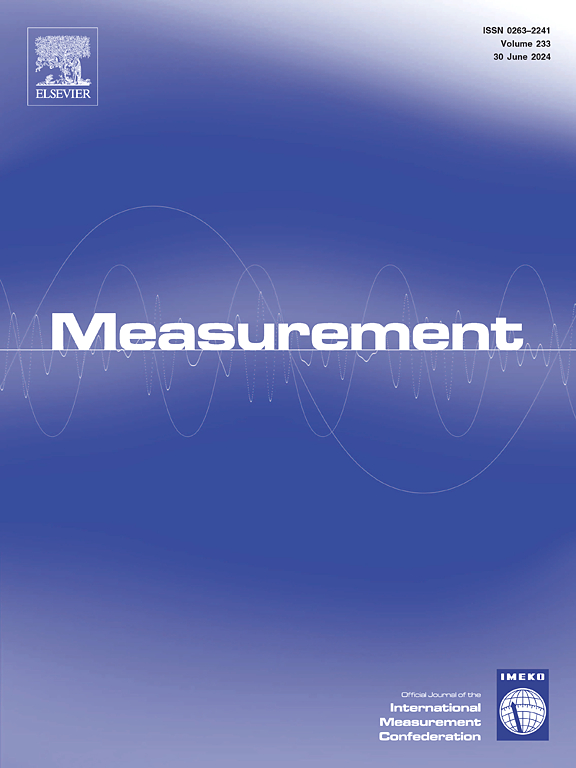Normal incident optical reflectance spectroscopy for thin-film thickness measurement with genetic algorithm
IF 5.6
2区 工程技术
Q1 ENGINEERING, MULTIDISCIPLINARY
引用次数: 0
Abstract
Thin films are widely used in applications such as corrosion prevention, semiconductor insulation, and photoelectric conversion, where precise thickness measurement is critical for quality control and performance optimization. Reflectance spectroscopy is attracting interest as a non-contact, non-destructive, and efficient method for industrial thin film thickness measurements. This paper proposed a normal incident optical reflectance spectroscopy to enhance the lateral resolution, signal-to-noise ratio, and decrease the incident angle range, thereby capturing a higher proportion of reflected light. The system integrates a white light lamp, fiber Y-bundles, a self-designed reflectance probe, and a spectrometer. Genetic algorithm (GA) is employed to extract the optimal film thickness by minimizing the discrepancy between the theoretical and measured reflectance spectra. Reflectance spectra of the silica film samples on silicon substrates were acquired to match well with those from the angular resolution spectrometer. The thickness deviations between the proposed system and an elliptical polarimeter were less than 2 nm, with a spectral fitting error below ±0.5 %. The system achieves a measurement stability of 0.018 nm, and a processing time of 0.37 s per point. Furthermore, the thickness distribution of a patterned film sample was successfully mapped, validating the system’s capability for in-situ thin film thickness measurements.
基于遗传算法的正入射光反射光谱薄膜厚度测量
薄膜广泛应用于防腐、半导体绝缘和光电转换等领域,其中精确的厚度测量对质量控制和性能优化至关重要。反射光谱学作为一种非接触式、非破坏性和高效的工业薄膜厚度测量方法正引起人们的兴趣。为了提高横向分辨率和信噪比,减小入射角范围,从而捕获更高比例的反射光,本文提出了一种正入射光学反射光谱法。该系统集成了一个白光灯、y型光纤束、一个自行设计的反射探头和一个光谱仪。利用遗传算法最小化理论反射光谱与实测反射光谱之间的差异,提取最优膜厚。得到的硅膜样品在硅衬底上的反射光谱与角分辨光谱仪的反射光谱吻合较好。该系统与椭圆偏振计的厚度偏差小于2 nm,光谱拟合误差小于±0.5%。该系统的测量稳定性为0.018 nm,处理时间为0.37 s /点。此外,成功地绘制了图像化薄膜样品的厚度分布,验证了该系统用于原位薄膜厚度测量的能力。
本文章由计算机程序翻译,如有差异,请以英文原文为准。
求助全文
约1分钟内获得全文
求助全文
来源期刊

Measurement
工程技术-工程:综合
CiteScore
10.20
自引率
12.50%
发文量
1589
审稿时长
12.1 months
期刊介绍:
Contributions are invited on novel achievements in all fields of measurement and instrumentation science and technology. Authors are encouraged to submit novel material, whose ultimate goal is an advancement in the state of the art of: measurement and metrology fundamentals, sensors, measurement instruments, measurement and estimation techniques, measurement data processing and fusion algorithms, evaluation procedures and methodologies for plants and industrial processes, performance analysis of systems, processes and algorithms, mathematical models for measurement-oriented purposes, distributed measurement systems in a connected world.
 求助内容:
求助内容: 应助结果提醒方式:
应助结果提醒方式:


